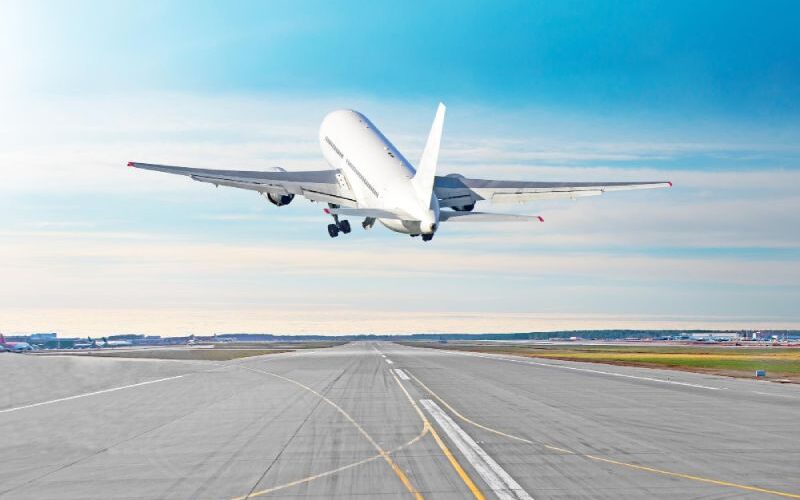The COVID-19 pandemic has caused significant changes in the aviation sector, with clear phases occurring before, during, and after the crisis. This article discusses the industry’s course, difficulties, and adaptations as it examines the significant changes that occurred throughout each of these times.
Before the pandemic
The aviation sector was a significant economic force and had a lot of room for expansion before the virus epidemic. Due to the increased demand for international travel, major firms like Airbus and Boeing anticipated significant growth in their operations. In order to transport people using large aircraft, Airbus devised a strategy that made use of significant hubs similar to the trunk and branches of a tree. Boeing had a different strategy that resembled a spider web and put an emphasis on speedy and direct flight.
The Boeing B-787, which could hold 300 people and featured interesting features like electronic windows and fuel-efficient technology, and the enormous double-decker Airbus A380 were two examples of these various designs (IATA, 2022; Airbus, 2021; Boeing, 2022).
During the pandemic
When the pandemic started, the aviation industry faced big problems. Countries closed their borders to stop the virus, and airlines had financial troubles and pilot licensing issues. Planes cost money even when they weren’t flying, so airlines lost a lot of money, and passengers dropped by 60% compared to average passengers (ICAO, 2022).
Pilots needed to fly a certain number of times within 90 days to keep their licenses. To deal with this, airlines came up with new flight plans. They had flights that left and came back to the same place, marketed as unique travel packages. These flights didn’t make much money, but they helped airlines reduce losses and keep running (https://koreajoongangdaily.joins.com, 2021).
Shifting Focus to Cargo and Unusual Flights
Unexpectedly, freight companies like FedEx and DHL gained more money since lockdowns caused more people to purchase online. As a result, airlines converted passenger jets into cargo aircraft by eliminating seats and other components. There were restrictions on what they could carry, but this modification enabled airlines to generate some revenue and abide by regulations governing pilot licensing (Willis Towers Watson, 2021).
After the pandemic
People want to travel abroad once again now that they are accustomed to the new normal. To accommodate this demand, airlines are gradually bringing back flights. However, airlines are raising ticket prices to offset their significant losses. Although it may be debatable, it’s crucial for the sector to financially recover (Afifa, 2023).
The COVID-19 epidemic had a significant influence on the aviation sector, forcing it to reconsider its operating principles and objectives. Airlines have to come up with fresh concepts for flights and destinations while also handling issues with pilot licensing. They also switched planes to use for freight. The lessons learned from this catastrophe will influence the industry’s future, even if it is currently in recovery. In the face of difficulties, it will become stronger and more adaptable.
Reference list
Afifa, L. (2023). INACA: Aviation Industry 80% Recovers from COVID-19 Pandemic. [online] Tempo. Available at: https://en.tempo.co/read/1727489/inaca-aviation-industry-80-recovers-from-covid-19-pandemic [Accessed 19 Aug. 2023].
Airbus (2021). A380 | Airbus. [online] www.airbus.com. Available at: https://www.airbus.com/en/products-services/commercial-aircraft/passenger-aircraft/a380 [Accessed 19 Aug. 2023].
BOEING (2022). Boeing: 787 Dreamliner. [online] Boeing.com. Available at: https://www.boeing.com/commercial/787/ [Accessed 19 Aug. 2023].
Geneva-based Air Transport Action Group. (n.d.). Covid-19’s impact on air transport. [online] aviationbenefits.org. Available at: https://aviationbenefits.org/covid-19s-impact-on-air-transport/ [Accessed 19 August 2023].
https://koreajoongangdaily.joins.com (2021). Flights to nowhere offer duty free deals that can’t be beaten. [online] koreajoongangdaily.joins.com. Available at: https://koreajoongangdaily.joins.com/2021/04/25/culture/lifeStyle/flight-to-nowhere-nolanding-flight-nonlanding-flight/20210425143000510.html [Accessed 19 August 2023].
IATA (2022). Understanding the pandemic’s impact on the aviation value chain. [online] Available at: https://www.iata.org/en/iata-repository/publications/economic-reports/understanding-the-pandemics-impact-on-the-aviation-value-chain [Accessed 19 August 2023].
ICAO (2021). Economic Impacts of COVID-19 on Civil Aviation. [online] ICAO. Available at: https://www.icao.int/sustainability/Pages/Economic-Impacts-of-COVID-19.aspx [Accessed 19 August 2023].
ICAO (2022). Effects of Novel Coronavirus (COVID-19) on Civil Aviation: Economic Impact Analysis. [online] Available at: https://www.icao.int/sustainability/Documents/COVID-19/ICAO_Coronavirus_Econ_Impact.pdf [Accessed 19 August 2023].
OECD (2020). COVID-19 and the aviation industry: Impact and policy responses. [online] OECD. Available at: https://www.oecd.org/coronavirus/policy-responses/covid-19-and-the-aviation-industry-impact-and-policy-responses-26d521c1/ [Accessed 19 August 2023].
Wikipedia contributors (2023). Impact of the COVID-19 pandemic on commercial air transport. [online] Wikipedia. Available at: https://en.wikipedia.org/w/index.php?title=Impact_of_the_COVID-19_pandemic_on_commercial_air_transport&oldid=1169944655 [Accessed 19 August 2023].
Willis Towers Watson. (2021). COVID-19 impact on the air cargo industry. [online] Available at: https://www.wtwco.com/en-ID/Insights/2021/01/covid-19-impact-on-the-air-cargo-industry [Accessed 19 August 2023].
